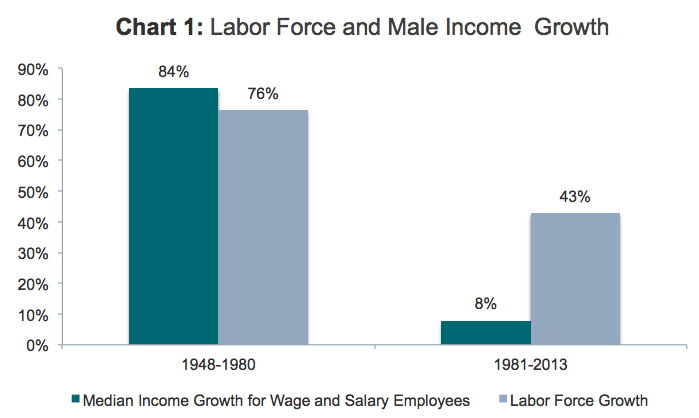Immigrants are not to blame for income stagnation since the 1970s. My recent study for the Niskanen Center proved this, and today The Hill online published an op-ed that I wrote outlining the case against this argument.
While economists debate whether income growth has been as bad as a single statistic would indicate, Sen. Jeff Sessions (R-Ala.) blames immigrants. “What has happened to the labor market since 1980?” he asked recently. “From 1980 through 2013, the immigrant population tripled from 14 million to more than 41 million. … [L]egal immigration … has placed substantial downward pressure on wages.”
But history rejects his theory. In a study by the Niskanen Center, I show that faster labor force growth is associated with greater income growth. From 1948 to 1980, the labor force expanded rapidly, increasing 76 percent, and real median income skyrocketed for wage and salary workers, rising over 80 percent for both men and women.
From 1981 to 2013, real median income growth slowed to a meager 8 percent for men and 55 percent for women. Was greater labor competition to blame? No. In fact, the labor force grew at half the earlier rate, increasing just 43 percent. Relative to the size of the workforce, many fewer workers were competing for jobs during this period.
In effect, America has tested Sessions’s policy prescription. Our labor supply has been constricted greatly over the past few decades, but with negative results. Lawmakers should learn from the past and reject the failed experiment of tighter labor markets. We should welcome new immigrants who want to work hard and contribute.
One thing that you won’t find in The Hill piece is the useful visuals that accompany my study.
Read the whole study here. As I concluded in my piece in The Hill, “American workers need a thriving economy. Immigrants are part of the solution; they are not the problem.”
